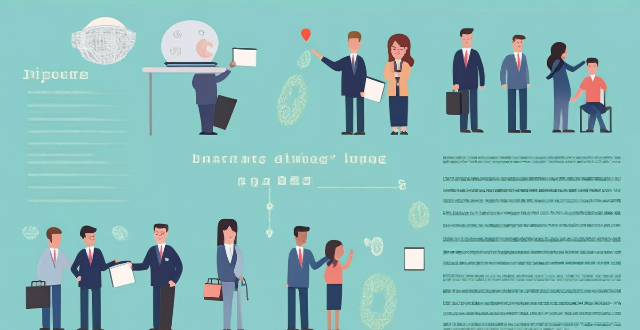The text discusses various current climate policies aimed at addressing global warming, including national and international agreements and corporate actions. National policies focus on renewable energy initiatives, carbon pricing mechanisms, energy efficiency standards, and deforestation reduction. International agreements like the Paris Agreement and Kyoto Protocol set targets for greenhouse gas emissions reductions. REDD+ provides financial incentives for reducing deforestation. Corporate actions involve CSR initiatives and carbon offsetting programs to minimize environmental impact.

Current Climate Policies to Address Global Warming
Global warming is a pressing issue that requires immediate attention and action. Governments, organizations, and individuals around the world are taking steps to reduce greenhouse gas emissions and mitigate the effects of climate change. Here are some of the current climate policies in place to address global warming:
National Policies
Renewable Energy Initiatives
Many countries have implemented policies to promote the use of renewable energy sources such as solar, wind, hydro, and geothermal power. These initiatives aim to reduce reliance on fossil fuels and decrease carbon emissions. Examples include:
- Feed-in Tariffs (FITs): Governments offer financial incentives for generating electricity from renewable sources and selling it back to the grid.
- Renewable Portfolio Standards (RPS): Laws requiring a certain percentage of electricity to come from renewable sources by a specific date.
- Tax Credits and Exemptions: Tax incentives for individuals and businesses that invest in renewable energy technologies.
Carbon Pricing Mechanisms
Carbon pricing mechanisms aim to put a cost on carbon emissions, encouraging industries and consumers to adopt cleaner technologies and practices. These include:
- Carbon Taxes: A tax levied on the carbon content of fossil fuels, which increases their price and encourages reduction in their use.
- Cap-and-Trade Systems: A cap is set on total greenhouse gas emissions, and companies can buy and sell allowances to emit certain amounts of carbon dioxide.
Energy Efficiency Standards
Governments are setting energy efficiency standards for appliances, buildings, and vehicles to reduce energy consumption and associated emissions. These standards often include:
- Appliance Efficiency Ratings: Mandating minimum efficiency levels for household appliances like refrigerators, air conditioners, and washing machines.
- Building Codes: Establishing guidelines for energy-efficient construction and retrofitting of buildings.
- Fuel Economy Standards: Regulating the fuel efficiency of cars, trucks, and other vehicles.
Deforestation Policies
Deforestation is a significant contributor to global warming due to the release of stored carbon when trees are cut down. Policies aimed at reducing deforestation include:
- Forest Protection Laws: Regulations that prohibit or limit logging activities in certain areas.
- Sustainable Forestry Practices: Encouraging responsible forest management through certification programs like FSC (Forest Stewardship Council).
- Reforestation Projects: Planting new trees to absorb CO2 from the atmosphere and restore ecosystems.
International Agreements
Paris Agreement
The Paris Agreement, adopted within the United Nations Framework Convention on Climate Change (UNFCCC), aims to limit global temperature rise this century well below 2 degrees Celsius above pre-industrial levels and pursue efforts to limit the temperature increase to 1.5 degrees Celsius. Key elements include:
- Nationally Determined Contributions (NDCs): Each country commits to reducing its greenhouse gas emissions by a certain amount by a specific year.
- Regular Updates: Countries are expected to update their NDCs every five years with more ambitious targets.
- Financial Support for Developing Countries: Wealthier nations provide funding to help developing countries implement climate policies.
Kyoto Protocol
The Kyoto Protocol was the first global treaty that bound industrialized countries to reduce their greenhouse gas emissions. Although its effectiveness has been limited due to non-participation by some large emitters, it set an important precedent for international cooperation on climate change. Key features include:
- Emission Reduction Targets: Binding targets for industrialized countries to reduce emissions below 1990 levels over the period 2008-2012.
- Flexibility Mechanisms: Allowing countries to meet their targets through international trading of emission reductions, joint implementation projects, or offsetting emissions through investments in sustainable development projects in developing countries.
REDD+ (Reducing Emissions from Deforestation and Forest Degradation)
REDD+ is a program under the UNFCCC aimed at creating financial incentives for developing countries to reduce emissions from deforestation and forest degradation while promoting sustainable forest management and enhancement of forest carbon stocks. It involves:
- Carbon Finance: Providing funding based on verified reductions in deforestation rates compared to a baseline year.
- Community Engagement: Engaging local communities in managing forests sustainably and equitably sharing benefits from reduced deforestation.
- Monitoring and Reporting: Developing systems to monitor changes in forest cover and report on progress towards emission reduction goals.
Corporate Actions
Corporate Social Responsibility (CSR) Initiatives
Many companies are voluntarily adopting sustainability practices as part of their corporate social responsibility programs. These actions often include:
- Greenhouse Gas Inventory and Reduction Goals: Companies tracking their own emissions and setting internal targets for reduction.
- Sustainable Sourcing: Using materials sourced in an environmentally friendly manner and ensuring supply chain partners adhere to certain sustainability standards.
- Investment in Clean Technologies: Spending research and development funds on innovative solutions that reduce environmental impact.
Carbon Offsetting Programs
Some corporations participate in carbon offsetting programs to balance out their unavoidable emissions. This involves investing in projects that remove CO2 from the atmosphere, such as:
- Reforestation Projects: Planting new forests that absorb CO2 over time.
- Renewable Energy Projects: Investing in wind farms or solar parks that generate electricity without producing greenhouse gases.
- Methane Capture Projects: Capturing methane released during waste management processes or agricultural activities, preventing it from contributing to global warming.